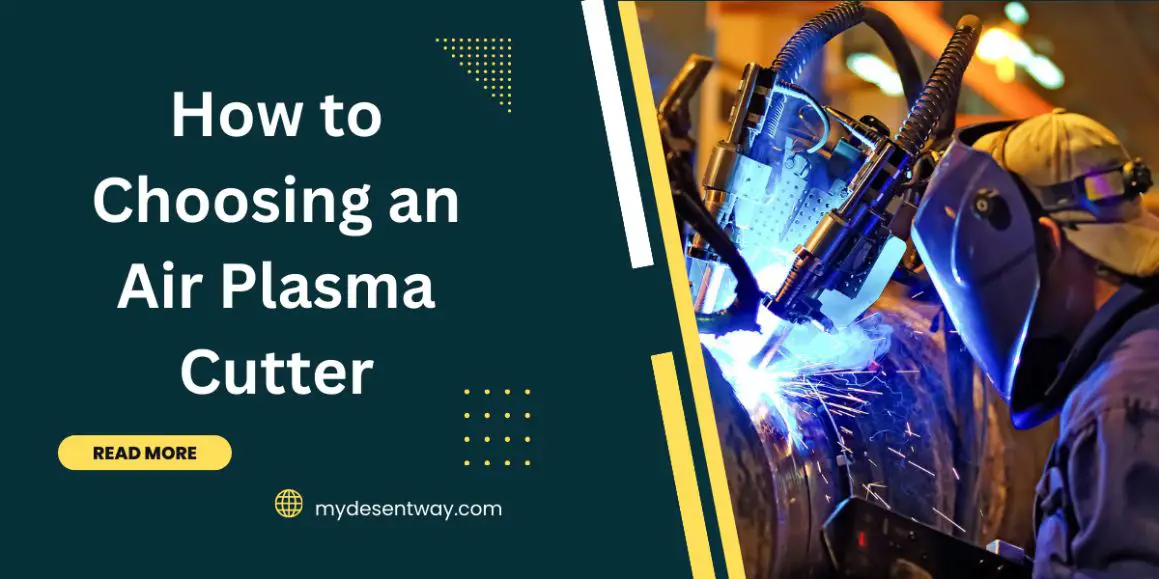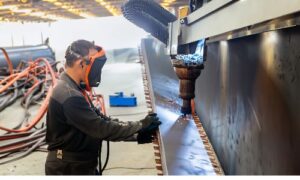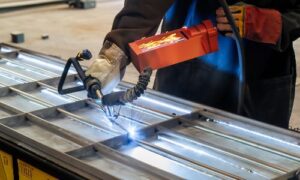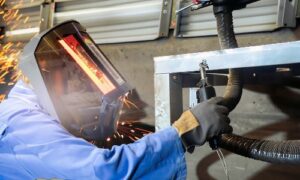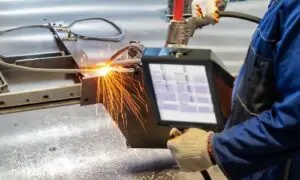Table of Contents
- 1. Choosing an Air Plasma Cutter for Precision Cutting
- 2. Factors to Consider When Choosing an Air Plasma Cutter
- 3. Power Source and Consumables: Key Considerations
- 4. Comparative Analysis of Top Air Plasma Cutter Brands
- 5. Budget Considerations and Cost-Efficiency
- 6. Choosing the Right Air Plasma Cutter for Your Needs
- 7. Best Air Compressor Match for Your Plasma Cutter
- 8. Unveiling the Plasma Cutter Air Pressure Chart
- 9. Demystifying Plasma Cutter Air Compressor Requirements
- 10. Optimal Capacity: 30-Gallon Air Compressor for Plasma Cutter
- 11. Mastering the Art: How to Use a Plasma Cutter
- 12. Types of Air Plasma Cutters
- 13. How to Choose Wisely
- Conclusion
- FAQs: How to Choosing an Air Plasma Cutter
- What factors should I consider when choosing an air plasma cutter?
- How do I determine the cutting capacity needed for my projects?
- What power sources are available for air plasma cutters?
- Why is portability important when choosing an air plasma cutter?
- How can I balance cost and quality when choosing an air plasma cutter?
- Are there specific maintenance requirements for air plasma cutters?
Finding the right air plasma cutter might feel like diving into a world of technical jargon, but fear not! This comprehensive guide is your passport to understanding everything about choosing the ideal air plasma cutter for your metal projects. We’ll explore various aspects, from cutter types to air compressors and practical usage tips.
1. Choosing an Air Plasma Cutter for Precision Cutting
Air plasma cutters have revolutionized metal fabrication by offering precise, efficient, and versatile cutting solutions. These tools utilize ionized gas to melt and sever metals with remarkable accuracy, making them indispensable across industries like automotive, construction, metalworking, and more.
When looking to invest in an air plasma cutter, several crucial factors must be considered to ensure the chosen tool aligns with your specific needs.
2. Factors to Consider When Choosing an Air Plasma Cutter
Cutting Capacity and Thickness
Understanding the cutting capacity and thickness capability of a plasma cutter is paramount. Different models cater to various metal thicknesses, and factors like amperage and power output directly influence their cutting abilities.
For instance, a higher amperage cutter can effortlessly slice through thicker metals compared to lower amperage ones. Evaluating your cutting requirements based on the metal thicknesses you frequently work with is essential.
3. Power Source and Consumables: Key Considerations
The power source is another critical aspect. Some plasma cutters rely on compressed air, while others may require specific gas types. Additionally, comprehending consumables, such as electrodes and nozzles, and their lifespan is vital for cost-effectiveness and uninterrupted operation.
Portability and Ease of Use
The portability and ease of use of an air plasma cutter significantly impact its usability in diverse settings. For onsite projects or workshops with limited space, a compact and easily maneuverable cutter proves highly beneficial. Features like ergonomic designs and intuitive controls enhance user-friendliness.
4. Comparative Analysis of Top Air Plasma Cutter Brands
Several reputable brands offer a range of air plasma cutters with distinct features and capabilities. Comparing brands based on reliability, innovation, and customer feedback helps in making an informed decision.
5. Budget Considerations and Cost-Efficiency
Balancing quality and cost is crucial when selecting an air plasma cutter. While investing in a high-quality machine may initially seem expensive, considering long-term cost efficiency and durability is prudent.
- Maintenance and Service Support
Regular maintenance ensures the longevity of an air plasma cutter. Availability of service support and easy access to replacement parts influence the overall reliability of the tool.
- User Reviews and Recommendations
Real user experiences often provide valuable insights into a cutter’s performance, durability, and overall satisfaction. Considering user reviews aids in understanding the practical aspects of different models.
6. Choosing the Right Air Plasma Cutter for Your Needs
Aligning the features and capabilities of various cutters with your specific requirements is the key to making an optimal choice. Prioritizing factors based on your intended applications helps in narrowing down the options and selecting the most suitable cutter.
7. Best Air Compressor Match for Your Plasma Cutter
Selecting the best air compressor for your plasma cutter hinges on various factors, including the cutter’s amperage and duty cycle. Ensuring compatibility between the plasma cutter and air compressor is crucial for seamless functionality.
8. Unveiling the Plasma Cutter Air Pressure Chart
A vital aspect of efficient metal cutting with a plasma cutter involves understanding the ideal air pressure settings. Consult the plasma cutter air pressure chart to achieve precise cuts and enhance overall operational proficiency.
9. Demystifying Plasma Cutter Air Compressor Requirements
Determining the specific air compressor requirements for your plasma cutter involves assessing factors such as cubic feet per minute (CFM) and operating pressure. These specifications vary among different models and play a pivotal role in performance.
10. Optimal Capacity: 30-Gallon Air Compressor for Plasma Cutter
For sustained and consistent operation, opting for a 30-gallon air compressor proves advantageous. Its ample capacity ensures a steady supply of compressed air, meeting the demands of various plasma cutting tasks.
11. Mastering the Art: How to Use a Plasma Cutter
Operating a plasma cutter efficiently involves mastering the technique. Learning the correct handling, adjusting settings, and maintaining proper distance between the cutter and metal surface are vital for precise and clean cuts.
12. Types of Air Plasma Cutters
- Handheld Plasma Cutters
Handheld plasma cutters are suitable for smaller-scale projects and offer ease of use and maneuverability. They’re ideal for DIY enthusiasts and small workshops due to their portability and compactness.
- Mechanized Plasma Cutters
Mechanized plasma cutters are designed for larger-scale, automated cutting tasks. They are often integrated into CNC machines for precise, repetitive cutting in industrial settings.
- High-Definition Plasma Cutters
For those requiring high-precision cutting with minimal edge bevel and enhanced quality, high-definition plasma cutters are the go-to choice. These are commonly utilized in industries requiring superior cut quality.
13. How to Choose Wisely
- Assessing Your Needs
Before diving into purchasing an air plasma cutter, it’s crucial to assess your specific needs. Consider the materials you’ll be working with, the thicknesses you’ll need to cut, and the frequency of usage.
- Researching Brands and Models
Conducting thorough research on various brands and models available in the market is essential. Reading reviews, comparing specifications, and seeking recommendations from industry experts or users can guide your decision. - Setting a Realistic Budget
Establishing a realistic budget aligns your expectations with available options. Remember to consider not just the initial purchase cost but also ongoing maintenance expenses. - Testing and Evaluation
Whenever possible, test the plasma cutters you’re considering. Whether in-person or through demos, evaluating the machine’s performance firsthand can provide invaluable insights. - Seeking Expert Advice
Don’t hesitate to consult experts or professionals in the field. Their experience and insights can offer invaluable guidance in selecting the most suitable air plasma cutter for your specific requirements.
Conclusion
Selecting the right air plasma cutter involves a thorough evaluation of cutting capacity, power sources, portability, and budget considerations. By understanding these factors and aligning them with your unique needs, you can make an informed decision that enhances efficiency and precision in metal fabrication.
video by 911 Motorsports
FAQs: How to Choosing an Air Plasma Cutter
What factors should I consider when choosing an air plasma cutter?
When selecting an air plasma cutter, consider factors like cutting capacity, power source, portability, and budget. Assess your specific cutting needs, the types of metals you’ll work with, and the intended applications to determine the most suitable cutter.
How do I determine the cutting capacity needed for my projects?
Assess the maximum thickness of metals you anticipate cutting. Match this thickness with the cutter’s amperage capacity, ensuring it comfortably handles your project requirements without limitations.
What power sources are available for air plasma cutters?
Air plasma cutters typically use compressed air as the primary plasma gas. However, some models might accommodate different gases like nitrogen or oxygen for specific applications. Ensure compatibility and follow manufacturer recommendations.
Why is portability important when choosing an air plasma cutter?
Portability impacts the cutter’s usability in various settings. Consider the mobility required for your projects. For instance, a compact and easily maneuverable cutter might be essential for onsite work or in smaller workshops.
How can I balance cost and quality when choosing an air plasma cutter?
Evaluate the long-term cost efficiency of the cutter. While a higher initial investment in a quality machine might seem expensive, it can prove cost-effective in terms of durability and performance in the long run.
Are there specific maintenance requirements for air plasma cutters?
Regular maintenance is crucial. Clean the torch, replace consumables as recommended by the manufacturer, and conduct routine checks to ensure optimal performance and longevity.
